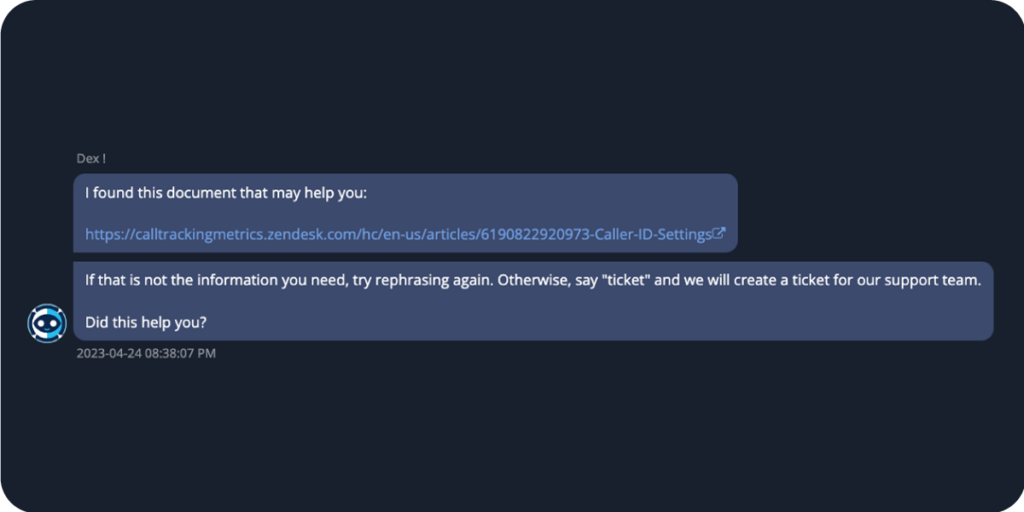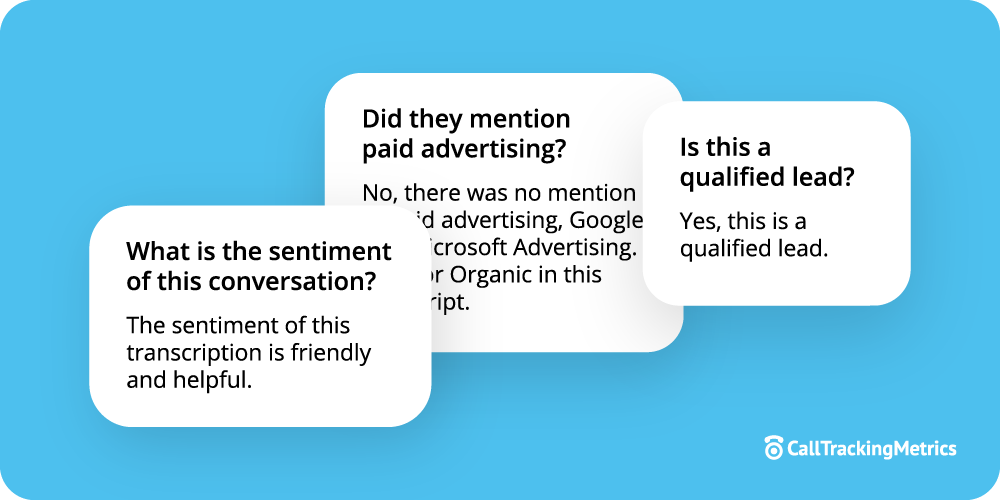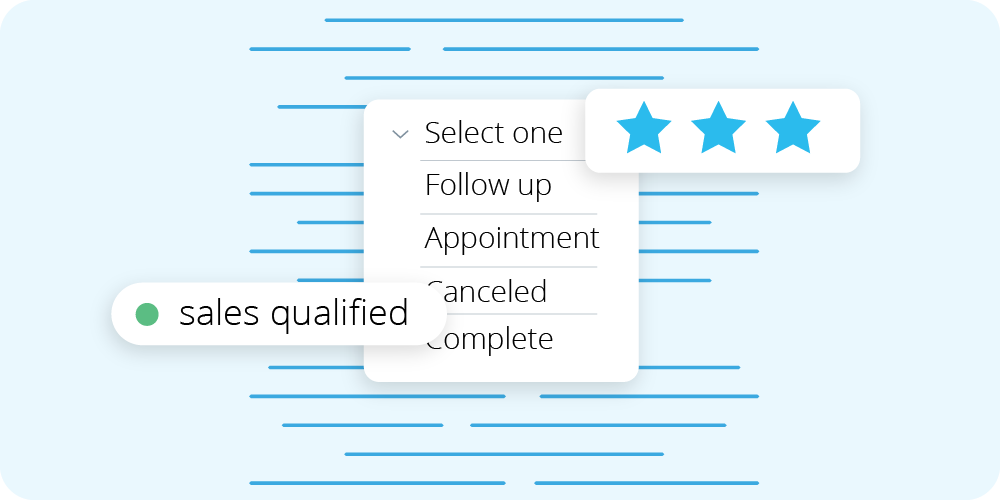What is Conversational AI? The Ultimate Guide
Read time 12 minutes
Table of Contents:
Introduction
Section 1: What Is Conversational Artificial Intelligence? (& Why Does it Matter?)
Section 2: 5 Benefits of Conversational Artificial Intelligence
Section 3: Types of Conversational Artificial Intelligence
Section 4: Terms To Know
Section 5: Use Cases and Case Studies
Final Thoughts
Introduction:
Most everyone has heard of artificial intelligence by now and know at least a little bit about it. But what every organization looking to do more with less should be asking is, “What is Conversational Artificial Intelligence?” Conversational artificial intelligence or conversational AI is making waves in organizations worldwide. From streamlining processes and saving time to gaining deeper insight into your ideal customer, conversational AI can support an organization in many ways. As both AI and conversational AI continue to evolve, so, too, do the capabilities and benefits.
This guide will give you a foundation for understanding the basics of conversational AI. From here, we invite you to dig a bit deeper into the parts of conversational AI that most interest you through linked blogs, guides, podcasts, and more to help you explore conversational AI in depth.
Read on to find out more about conversational AI and how it can help your business to do more with less, support employees, and create an exceptional customer experience.

What is Conversational Artificial Intelligence (and Why Does it Matter)?
Conversational AI is a technology that is able to communicate and have conversations with people. It can ask and answer questions, mimic conversations, and even understand the sentiment of a conversation and respond appropriately.
Conversational AI works by combining natural language processing (NLP) with machine learning. More specifically, conversational AI technologies use natural language understanding (NLU) and natural language generation (NLG) to engage with prospects and customers in meaningful–and very humanlike–ways.
This AI technology uses data input from people and learns from it. Once it ‘understands’ this unique data, it is then able to engage in conversations with real people. This is the machine learning part of the process.
From here, conversational AI uses NLU to understand words and phrases and then NLG to process the data and construct the most ideal and appropriate responses to human inquiries.
For example, your data input could be different ways to roast a chicken to how to code parts of a website. Once it’s fed this information, it could “chat” with someone looking for the fastest roasting method or a coding script for a newsletter sign-up page.
As you can imagine, and have probably already heard, the benefits of conversational AI for businesses are enormous–and growing.
What is Conversational AI?
A technology that is able to communicate with people.

The Benefits of Conversational AI
Conversational AI helps organizations by automating manual processes and quickly deriving insights from large amounts of data. Exactly which processes can be automated and what type of information can be garnered from the data depends on the specific conversational AI platform used.
5 Benefits of Conversational AI
Conversational AI’s benefits are growing, and will only become more enhanced with time, supporting organizations in all industries and of all sizes.
Currently, here are five top benefits of conversational AI technologies.
1. Save Time
No matter how big or small your team is, everyone wants to save time and do more with less. The leaner your team is, the more important business success is to each member. One way conversational AI helps companies save time is by automating many processes previously executed by employees.
AI-powered automation is a big time, and money, saver for organizations. From engaging in conversations with callers, texters, or chatters outside of normal business hours to handling inquiries when all of your agents are busy, conversational AI supports customer service teams and saves time by providing relevant information and support to prospects and customers. All these tasks previously performed by employees can now be carried out by conversational AI tools like chatbots and virtual agents.

90% of Americans use customer service as a deciding factor when it comes to deciding who to do business with, according to Microsoft.
This not only frees up agents and saves time, but it also allows customer service and sales teams to redirect their focus on high-priority leads and customers, thereby improving speed to lead time.
But that’s not all…
Conversational AI is able to effectively sift through large amounts of data and deliver the most important information and insights quickly–saving employees from countless hours doing this mundane work.
What’s more, many tools can automate the next steps like an appointment confirmation or sending a promo code. This saves sales and marketing teams significant time and maximizes their efforts.
“One of the really amazing things we can do with ChatGPT is mine all of our past conversation history and automatically build a FAQ of all the common questions and answers. In the past, we would have built these FAQs by hand.”
2. Support Data-backed Decisions
Making data-backed decisions and strategies today is non-negotiable. It’s essential to not just gather the right data, but also effectively sort and organize it for analysis. Most organizations get most of the data they need, however, there’s often so much data that many don’t have the time or the right tools to sort, analyze, and utilize this vital data. Conversational AI technology quickly sifts through vast amounts of data and accurately derives important insights.
Tools like CTM’s AskAI powered by ChatGPT let you choose specific questions to be answered as soon as a conversation is over. For example, you can ask for a two to three-sentence conversation summary or automatically score an activity. These tools provide a wealth of data at your fingertips instantly that can help guide your organization’s strategies.

Marketing teams benefit from being able to use these insights to inform their campaigns. AI call scoring lets marketing teams make decisions about where to focus ad spend –and always have the data to back it. What’s more, content writers on this team can review brief summaries to know which keywords and messaging resonate the most with prospects.
Sales teams are able to seamlessly prioritize which leads are the most viable and focus their efforts (and best agents) there. This prevents sales teams from wasting time calling back leads at the wrong numbers and listening to voicemails. When conversational AI tools are paired with marketing automation tools, these priority callbacks can be in a queue specific to the agent best suited to meet each caller’s needs when they begin their day.
This saves agents time sorting through call logs and transcripts, and this prompt and personalized service results in a better experience for customers.
3. Improve Customer Satisfaction
Speaking of a better customer experience, conversational AI tools help to improve customer satisfaction and provide an exceptional customer experience every time.
Tools like virtual agents and chatbots provide helpful service during non-business hours and eliminate frustrating wait times during business hours. And customers like it, overall – 69% of customers say they’re satisfied with their chatbot experiences, and 74% of business owners are “satisfied” with chatbot performance in their company. Other conversational AI tools, like CTM’s AskAI and activity scoring, can provide summaries and key points from prior interactions so the next time they reach out the agent picking up the call knows exactly what was said and the outcome of the last interaction.
With activity scoring, teams will know at a glance which leads are the most likely to convert and how to prioritize the next steps.

When teams have this information about conversations and callers they can provide a more helpful, efficient, and personalized customer service experience. This superior customer service turns prospects into customers and customers into loyal, raving fans of your organization.
Conversational AI does even more.
The summaries and scores automatically delivered from these conversations can also trigger the next steps, like sending an appointment confirmation or a relevant promo code to a hot lead. This prompt and personalized customer service goes a long way with prospects and customers alike.
93% of customers say they make repeat purchases from companies that offer excellent customer service.
Source: HubSpot
4. Increase Productivity and Efficiency
Many times marketers and sales professionals spend a lot of time on recurring, tedious daily tasks. When these tasks, like sifting through hours of conversations to find the best leads or determining which keywords are driving the most valuable calls, are automated by conversational AI tools, team members can spend their time on more complex tasks.
Your lead agent no longer has to spend multiple hours a day on callbacks, listening to phones ringing and voicemails. Instead, they can focus their efforts on the hottest leads–and convert them!

Just imagine how your revenue would grow if you could pair your best agents with your hottest leads instantly, consistently, and automatically.
5. Provide Deeper Customer Insight and Understanding
Knowing which messages get the most traction helps you to get insight into your customer. When you use marketing attribution to track each interaction, you’ll know which ads and campaigns are driving the highest-value leads and which ones result in the most duds. Paired with conversational AI, you’ll get deep insights into your audience, customer, and marketing efforts.
When you understand your ideal customer, your entire organization wins. From product development teams understanding what product or service updates would be most beneficial for customers to marketing teams knowing which keywords are spoken the most and which channels are sending the most viable leads, conversational AI provides a wealth of information about your audience–directly from them.
What better source of information could there be?

Examples of Conversational AI Tools
There are many different types of conversational AI software platforms and, as mentioned, each offers something a bit different from the next. Here are examples of some of the most popular and sought-after conversational AI tools:
- Chatbots | The chatbot market will reach $77 million in 2022. (Fortune Business Insights)
- Virtual Agents
- Voice-based assistants (Siri, Alexa, etc.) | As of 2023 there are 4.2 billion voice assistants in use, predicted to grow to 8.4 billion by 2024
- ChatGPT | There were over 100 million ChatGPT users in just two months.
- Text-to-speech
- Speech-to-text
Conversational AI offers many ways to support organizations of all sizes and industries to do more with less, support their employees to excel, and drive the bottom line.

Terms to Know
Natural language processing (NLP)
This branch of AI processes and interprets text and data using machine learning. Organizations using NLP tools are able to analyze and extract details about customers and conversations to understand the sentiment and more about customer communications.
Natural language understanding (NLU)
NLU is a type or subtopic of NLP. This type of conversational AI, also known as natural language interpretation (NLI), uses machine reading comprehension. This is much sought after by organizations for reasons including automated reasoning, question answering, and large-scale content analysis.
Natural language generation (NLG)
Another AI-powered process, NLG, translates data into natural language using AI. Chatbots, virtual agents, and AI-powered content writing tools are examples of NLG in action.
Machine learning
This type of AI mimics human learning by using data and algorithms. Over time, machine learning improves in its accuracy. Machine learning makes it possible for businesses to process and use large quantities of data to make smart, data-backed decisions.
Artificial Intelligence (AI)
Artificial intelligence is the simulation of human intelligence processes by machines and computer systems. AI is capable of perceiving, processing, and inferring information.
Chatbots
A chatbot or chatterbot is used in place of a real agent. This software application engages in online conversations through text or free text-to-speech.
While not exactly a type of conversational AI, this AI chatbot developed by OpenAI, can be used as conversational AI. This tool uses NLP to engage in human-like conversations.
Virtual Agents
Virtual agents have more capabilities than chatbots and are able to help customers with more complex tasks than chatbots. They use NLP to understand customer sentiment and intent.
Voice-based assistants
This type of conversational AI software executes daily tasks via voice command. Voice-based assistants, like Siri and Alexa, can be found on smart speakers, smartwatches, mobile phones, and more.


Conversational Artificial Intelligence Use Cases and Case Studies
Stackmatix, Tutor Doctor, and CTM: Closing Attribution Gaps and Aligning Teams
Smart Route Podcast: AI, Your Phone Calls & Conversation Intelligence
Final Thoughts
Investing in conversational AI and other AI-powered tools helps companies maximize their resources, increase productivity, and improve efficiency. Take the time to make the right choice with conversational AI software.
CallTrackingMetrics offers conversational AI tools to power teams and drive your bottom line. Book a Demo and check it out today!
